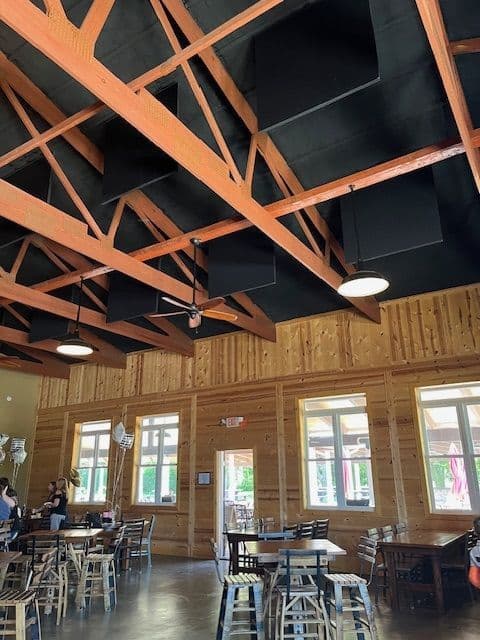Lighting Requirements in Burns, Kansas
Lighting Regulations in Burns, Kansas: Balancing Rural Heritage with Essential Illumination
Introduction
Burns, Kansas, with its rich agricultural heritage and small-town charm, has carefully balanced modern necessities with the preservation of its historical character. As a small community with a population of just 228 (according to the 2010 census), Burns approaches regulations with a focus on maintaining its rural identity while ensuring residents' basic needs are met. The town's lighting regulations reflect this balanced approach, focusing on essential requirements rather than extensive restrictions.
The historic Burns Union School—the first consolidated grade and high school in Kansas and now the Burns Community Museum—stands as a testament to the town's commitment to preserving its history. This preservation mindset extends to how Burns approaches lighting: practical, functional, and respectful of the community's agricultural roots and rural atmosphere.
Quick Reference Guide
Essential Burns Lighting Requirements:
- Interior Requirements:
- Every habitable room: ceiling electric outlet plus wall/floor duplex outlet, OR at least two wall/floor outlets
- Bathrooms and toilets: minimum of one electric light (ceiling or wall)
- Exterior Considerations:
- Trees overhanging streets must be pruned to avoid obstructing street lamps
- City has authority to prune trees/shrubs that block street lighting
- Habitability Standard:
- Lack of adequate lighting can render a building unfit for human habitation
Interior Lighting Requirements
Habitable Room Standards
In Burns, Kansas, functional interior lighting is considered essential for residential safety and livability. The building code establishes clear minimum standards for electrical outlets and lighting fixtures in living spaces.
Every habitable room must have either:
- A ceiling electric outlet AND a duplex outlet in the wall or floor, OR
- At least two wall or floor outlets
These requirements ensure that residents have adequate options for lighting their living spaces according to their needs and preferences.
Bathroom Lighting Requirements
Proper lighting in bathrooms and toilet rooms is particularly important for safety and functionality. The regulations for these spaces are straightforward:
- Every toilet and bathroom must have at least one electric light fixture
- This fixture can be located either in the ceiling or on the wall
- No specific brightness requirements are specified, but the light must be functional
Street Lighting and Tree Maintenance
Property Owner Responsibilities
Burns places importance on maintaining clear visibility for street lighting. This focus demonstrates the town's commitment to public safety while managing its natural landscape.
Property owners with trees overhanging any street or right-of-way within the city must:
- Prune branches that obstruct light from street lamps
- Ensure that street lighting can function effectively
- Maintain trees in a way that preserves both lighting functionality and tree health
City Authority for Light Obstruction
The city maintains certain rights regarding the pruning of vegetation that interferes with street lighting:
- The city has the authority to prune trees or shrubs on private property when they:
- Interfere with the proper spread of light from street lamps
- Block visibility of traffic control devices or signs
- This authority balances public safety needs with respect for private property

Building Habitability Standards
Lighting as a Habitability Factor
Burns recognizes that adequate lighting is a fundamental component of a habitable dwelling. The building code explicitly identifies lack of light as a condition that can contribute to a building being deemed unfit for human habitation.
This standard acknowledges that:
- Proper lighting is essential for basic quality of life
- Buildings without adequate lighting may be considered unsafe or unsuitable for occupancy
- Lighting is considered alongside other basic utilities and structural elements in determining habitability
What Property Owners Should Know
Understanding Basic Requirements
For property owners in Burns, compliance with lighting regulations is relatively straightforward. The focus is on ensuring that:
- All habitable rooms meet the minimum electrical outlet requirements
- Bathrooms have appropriate lighting fixtures
- Trees and vegetation don't obstruct street lighting
Rural Character Considerations
While Burns has minimal specific lighting regulations, property owners should consider how their lighting choices affect the community's rural character. The town's small size and agricultural heritage suggest a preference for:
- Modest lighting that serves practical purposes
- Avoiding excessive brightness that might detract from night sky visibility
- Respecting neighbors by preventing light trespass onto adjacent properties
Supporting Burns' Community Character
Bock Lighting's Commitment to Small Town Values
Bock Lighting, with roots dating back to 1918, understands the unique character of small towns like Burns. As a manufacturer with deep appreciation for rural communities, Bock recognizes the importance of balancing modern lighting needs with preservation of small-town charm.
For communities like Burns that value their agricultural heritage, lighting serves both functional and aesthetic purposes. Bock's experience working with small communities throughout the Midwest provides insight into how lighting can enhance rather than detract from a town's unique character.
Educational Resources for Rural Communities
Understanding that small towns often have streamlined regulations, Bock Lighting serves as an educational resource for residents who want to make lighting choices that honor their community's character. This includes guidance on:
- Lighting solutions that support public safety while respecting rural aesthetics
- Options that provide adequate illumination without creating unnecessary light pollution
- Approaches that balance modern technology with traditional community values
Bock's commitment to sustainable and responsible lighting practices aligns with the cautious approach to development that characterizes Burns and similar rural communities.
Conclusion
Burns, Kansas, maintains a simple but practical approach to lighting regulations, focusing on essential interior requirements and street light functionality. These modest standards reflect the community's rural character and its careful balance of modern needs with historical preservation.
For residents and property owners, understanding these basic requirements helps ensure compliance while respecting Burns' unique small-town atmosphere. The town's approach demonstrates that effective lighting standards don't need to be complex to serve the community's needs.
While Burns doesn't maintain extensive lighting regulations, its approach honors its agricultural heritage and close-knit community values—proving that sometimes, in matters of regulation, less can indeed be more.


